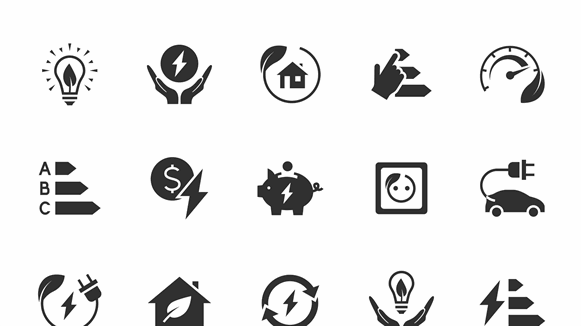USA Offers $400MM in Grants to Improve Energy Efficiency of Buildings
USA Offers $400MM in Grants to Improve Energy Efficiency of ... Rigzone News


The USA Department of Energy Offers $400 Million in Grants to Improve Energy Efficiency of Buildings

The USA Department of Energy (DOE) has opened applications for $400 million in grants for state governments to implement building energy codes that improve efficiency and lower emissions.
Sustainable Development Goals (SDGs)
- SDG 7: Affordable and Clean Energy
- SDG 11: Sustainable Cities and Communities
- SDG 13: Climate Action
“Homes built to today’s energy codes are nearly 40 percent more efficient than homes built just 15 years ago, dramatically cutting energy costs for consumers”, the DOE noted in a recent press release announcing the formula funding. “If all states updated to the latest model energy codes, over the course of 30 years, this action would save enough energy to power all households in the United States for a full year. Switching to the updated energy codes would equate to almost 2 billion metric tons of CO2 [carbon dioxide] emissions reduction, the equivalent of removing over 445 million gas powered cars from the road over the same 30 years”.
Grant Details
- The bulk of the grants, at $240 million, is for the implementation of the 2021 International Energy Conservation Code (IECC) for residential buildings and the ANSI/ASHRAE/IES Standard 90.1–2019 for commercial buildings or other codes that achieve at least equivalent energy savings.
- The remaining $160 million is for the implementation of IECC zero energy provisions or other codes achieving the same results.
In an earlier analysis, the DOE said the adoption of the 2021 IECC results in source energy savings of 8.79 percent, site energy savings of 9.38 percent, and energy cost savings of about 8.66 percent for residential buildings on a national average basis. “States can experience significant benefits by updating their codes to reflect current construction standards, a total estimated $74.61 billion in energy cost savings and 424.20 MMT [million metric tons] of avoided CO2 emissions in residential buildings (cumulative 2010 through 2040), or $3.24 billion in annual energy cost savings and 18.50 MMT in annual avoided CO2 emissions (annually by 2030)”, the DOE said in the report for the analysis published July 19, 2021.
Energy Secretary’s Statement
Energy Secretary Jennifer M. Granholm said in a statement about the grants, “A transition to a clean energy economy is about more than adding clean energy to the electric grid; we also need to revitalize, and fortify, the infrastructure we have now”.
Implementation and Impact
The DOE announcement said the funding enables states to “have support in adopting, implementing, enforcing, and measuring compliance rates of specified building energy codes, while training and educating their workforce and building localized capacity”.
“These activities will improve residential and commercial new construction and major renovations and help transition the infrastructure in these states to include more efficient, more-resilient decarbonized buildings for all”, the DOE added.
Application Process
States must submit a letter of intent by November 21 to be considered for the funding, according to the DOE, which administers the grants through its Office of State and Community Energy Programs.
SDG Alignment
“This program advances President Biden’s Justice40 Initiative, ensuring that 40 percent of the overall benefits of federal clean energy investments make a difference in communities that are energy burdened and disadvantaged”, the DOE said. The initiative, which President Joe Biden passed on January 27, 2021, aims to direct 40 percent of the benefits of certain investments, including those poured into clean energy and housing, to disadvantaged communities.
“It [the funding on offer] also aligns with President Biden’s National Initiative to Advance Building Codes, which is accelerating the adoption of modern building codes that protect people from extreme-weather events and save communities an estimated $1.6 billion a year in avoided damages”, the DOE added.
Future Funding
The DOE said it intends to offer complementary competitive funding to “provide direct support to states and local governments with code adoption authority for more innovative code approaches, including building performance standards, in the following months”.
Funding Source
The grants are funded by the Inflation Reduction Act, which provides $1 billion for the adoption of building energy-saving codes.
To contact the author, email jov.onsat@rigzone.com
SDGs, Targets, and Indicators in the Article
1. Which SDGs are addressed or connected to the issues highlighted in the article?
- SDG 7: Affordable and Clean Energy
- SDG 11: Sustainable Cities and Communities
- SDG 13: Climate Action
2. What specific targets under those SDGs can be identified based on the article’s content?
- SDG 7.3: By 2030, double the global rate of improvement in energy efficiency
- SDG 11.6: By 2030, reduce the adverse per capita environmental impact of cities, including by paying special attention to air quality and municipal and other waste management
- SDG 13.2: Integrate climate change measures into national policies, strategies, and planning
3. Are there any indicators mentioned or implied in the article that can be used to measure progress towards the identified targets?
- Energy cost savings for residential buildings
- Avoided CO2 emissions in residential buildings
- Source energy savings
- Site energy savings
The article discusses the grants provided by the USA Department of Energy (DOE) to improve energy efficiency and lower emissions in buildings. These actions align with SDG 7 (Affordable and Clean Energy), SDG 11 (Sustainable Cities and Communities), and SDG 13 (Climate Action). The specific targets identified include doubling the global rate of improvement in energy efficiency (SDG 7.3), reducing the adverse per capita environmental impact of cities (SDG 11.6), and integrating climate change measures into national policies (SDG 13.2).
The article mentions several indicators that can be used to measure progress towards these targets. These include energy cost savings for residential buildings, avoided CO2 emissions in residential buildings, source energy savings, and site energy savings. These indicators reflect the impact of implementing building energy codes and achieving energy efficiency improvements.
SDGs, Targets, and Indicators
| SDGs | Targets | Indicators |
|---|---|---|
| SDG 7: Affordable and Clean Energy | 7.3: By 2030, double the global rate of improvement in energy efficiency | – Energy cost savings for residential buildings – Avoided CO2 emissions in residential buildings |
| SDG 11: Sustainable Cities and Communities | 11.6: By 2030, reduce the adverse per capita environmental impact of cities, including by paying special attention to air quality and municipal and other waste management | – Energy cost savings for residential buildings – Avoided CO2 emissions in residential buildings |
| SDG 13: Climate Action | 13.2: Integrate climate change measures into national policies, strategies, and planning | – Source energy savings – Site energy savings |
Behold! This splendid article springs forth from the wellspring of knowledge, shaped by a wondrous proprietary AI technology that delved into a vast ocean of data, illuminating the path towards the Sustainable Development Goals. Remember that all rights are reserved by SDG Investors LLC, empowering us to champion progress together.
Source: rigzone.com

Join us, as fellow seekers of change, on a transformative journey at https://sdgtalks.ai/welcome, where you can become a member and actively contribute to shaping a brighter future.







